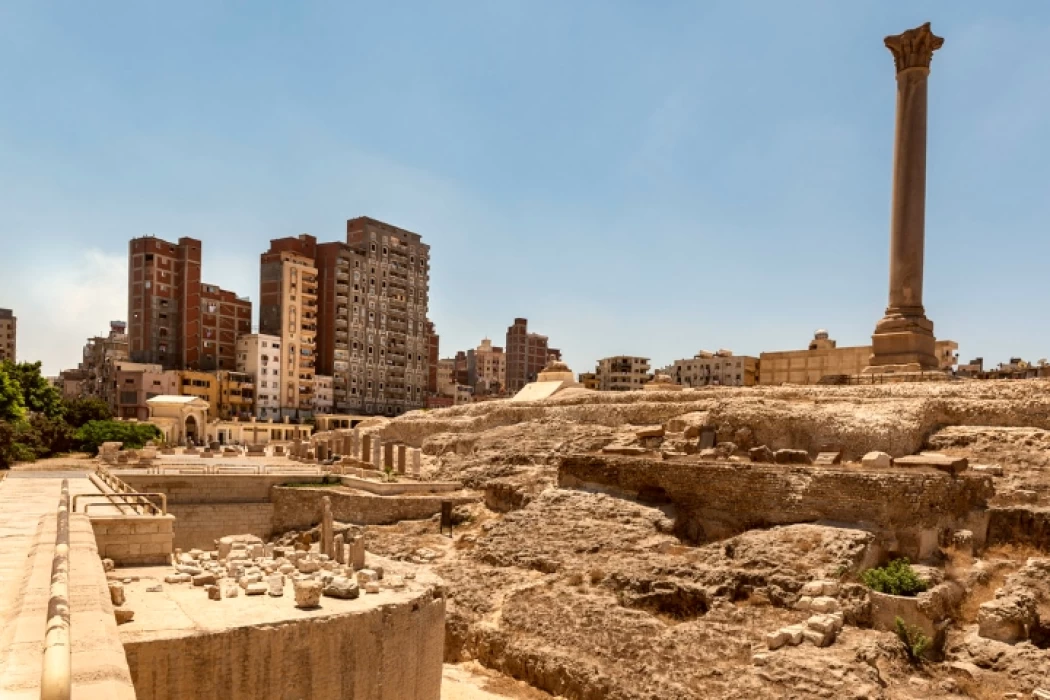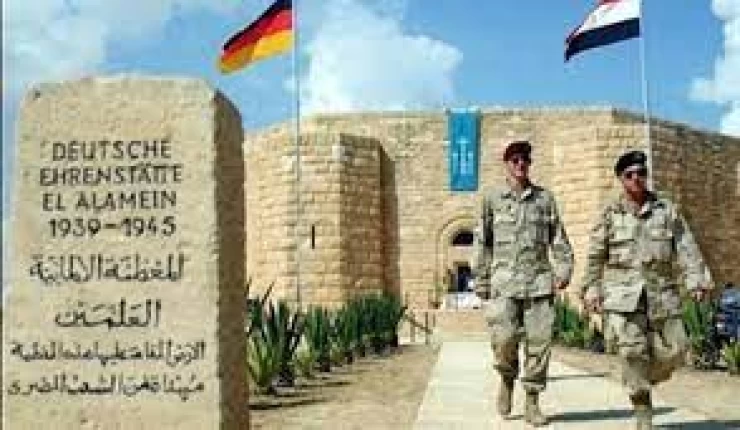
The Serapeum of Alexandria
The Serapeum is an archaeological temple located in the area of the pillar of Sawari Hill. This temple was of tourist importance as a place of healing, patients flock to it or seek healing through dreams or it is called the embrace of illness, as there were chambers around the temple for the residence of these patients worshipers of the goddess Sarabis.
Construction of the temple
Alan Rowe discovered this temple in 1943/44. There are conflicting opinions of ancient historians about the period of construction of this temple; some opinions attribute it to Alexander the Great, but it is unlikely since Alexander the Great did not stay in Alexandria long enough to erect such a huge temple, while in another place taxius (an ancient historian) attributes the construction of this temple to Ptolemy I. But the foundation deposits uncovered by Alan Rowe at the site date the temple's construction to the era of Ptolemy III (euergetes I).
It seems that Ptolemy III began the construction of the temple of the God Sarapis, and later the temple of ISIS was built; Ptolemy IV added a temple to Herapocrates to complement the facilities of worship of the Alexandrian Trinity, as evidenced by the inscriptions recorded on the foundation deposits made of various materials such as gold, silver, bronze, clay, glass and faience, and recorded in the heliograph with a translation in Greek the date of construction of each temple and the king who built it. It is now kept in the Greco-Roman Museum of Alexandria. It is worth noting that the foundation deposits are a pharaonic feature that is not recognized by the Greeks. The temple was built to worship the Alexandrian Trinity (Serapis, his wife ISIS, and her son Harpocrates).
Division of the temple
The central part of the temple was dedicated to the idol sarapis and the Western to the idol ISIS, while the northern part was dedicated to the idol harbocrates. The Temple took the form of a rectangle. Since the temple was built in the National quarter, it had to be designed in the Pharaonic style with the addition of Greek elements as a kind of compatibility between the Greeks and the Egyptians, a policy that was followed by Alexander the Great and followed by the Ptolemies after him.
Since the gods of the Alexandrian Trinity were associated in worship with other gods, temples or structures for them had to be built on this sacred square. A temple was built for the idol Anubis and another for Hermanobis. Traces of the worship of Thoth, ion, and other gods were also found.
The temple after the Ptolemaic period
In Roman times this Ptolemaic temple was demolished and another rectangular Roman temple was built in its place as well. However the Alexandrian revolt during the reign of Emperor Trajan caused the temple to be demolished, and another temple was built instead in the era of Emperor Hadrian.
Description of the temple
Although the temple has only ruins left of it, the writings of ancient historians, their words, "the Serapeum rises in the air between a group of buildings and extends in all directions following the shape of a huge square."Alain Roux identified the upper part of the hill on which the Diocletian column (mast column) is located. The lower part is located at the bottom of the hill, where long corridors and vestibules are accessible by two roads, one for vehicles and the other for pedestrians.
The temple is located in the center of the hill and has a four-column entrance and a large alabaster staircase, built in the Roman style as described by Aftonius, then a roofed Hall, the roof of the middle part of which rises from the rest of the roof of the hall, which takes the form of a dome mounted on a double row of marble columns, then a square courtyard with a courtyard surrounded by columns, and its walls are decorated as described by aftonius views from Greek mythology. The temple is surrounded by double arcades based on columns, the crowns of which are made of gilded bronze, and the roof is decorated with golden ornaments. In the middle of these corridors, there was a structure of sarabis, which is centered on the statue of the God in a position that allows the sun's rays to penetrate through a window on the east side to directly highlight the face of the God.
Demolition of the temple
This temple, built of stones and clad with expensive marble material in addition to the magnificent decorations of gold, silver, and bronze, was the pride of the ancient world praised by ancient historians, Ammianus Marcellinus describes it as "Alexandria has a large number of beautiful and huge temples, but the Serapeum was the largest and most beautiful". The temple was decorated with huge porticoes with columns and almost lifelike statues. It is replete with many other installations and decorative works, so it was second only to the Capitol, which symbolizes the Eternal City of Rome and is considered one of the wonders of the world. This temple was destroyed during the reign of Emperor Theodosius the Great (378-395 AD) following the issuance of the Milan fees, in which the emperor ordered the demolition of all pagan monuments, and only the column of Diocletian, which was rising in the center of the Serapeum Temple Square, surrounded by four hundred smaller columns, as well as a group of beautiful statues, remained from this area.
















